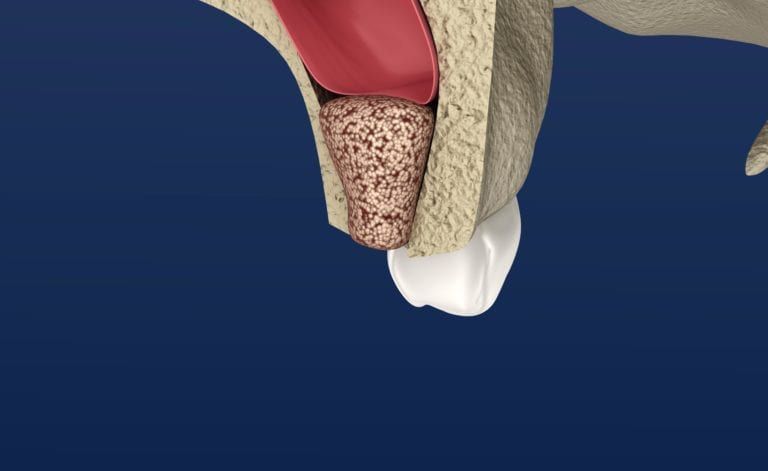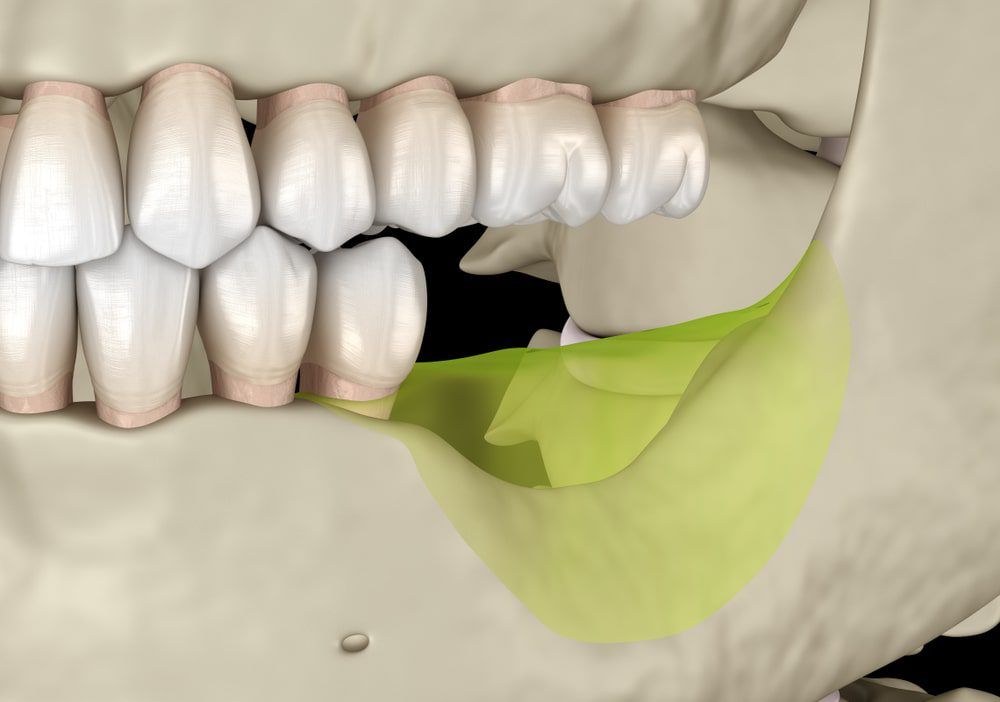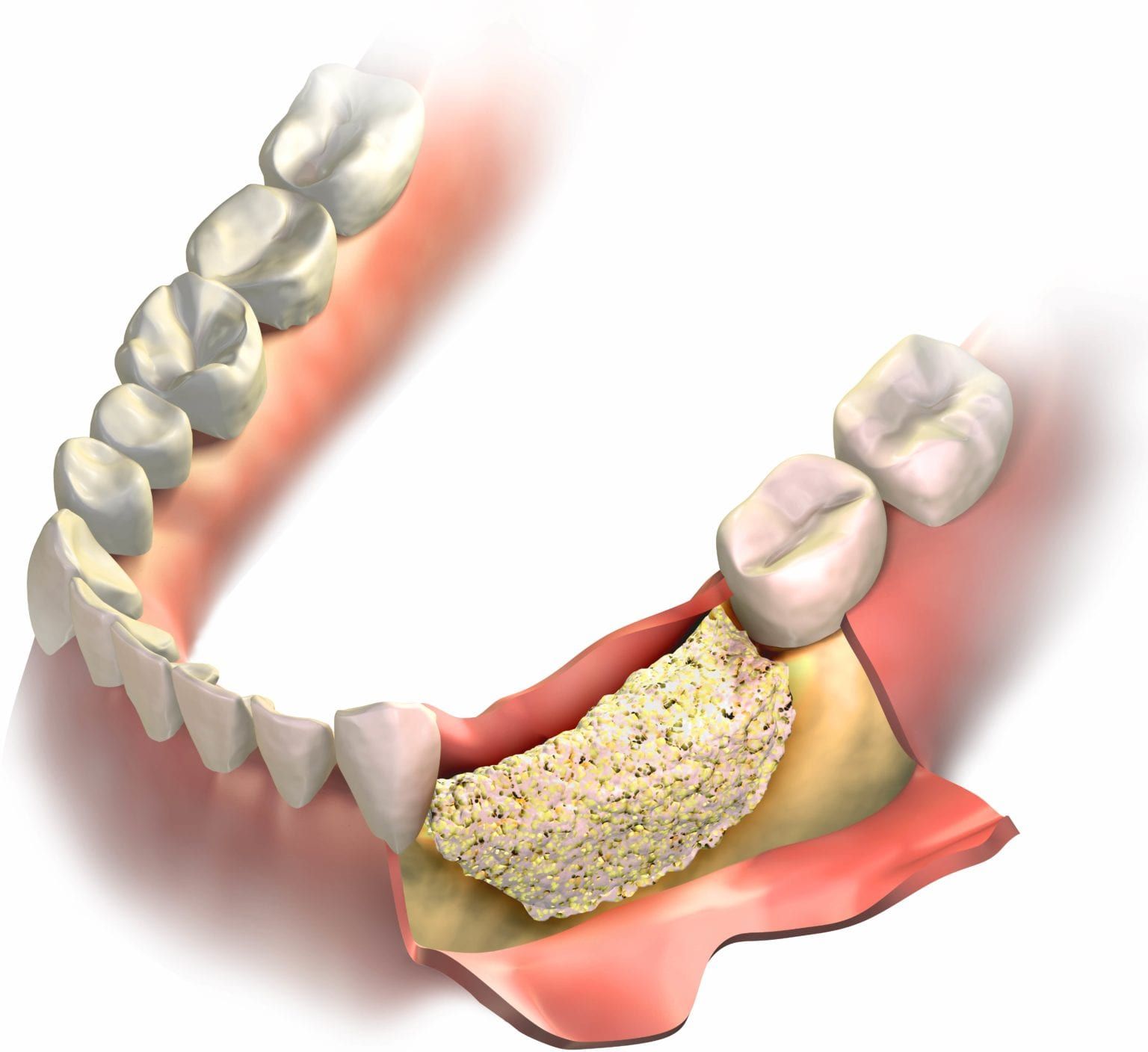Bone grafts are surgical dental procedures used to build up the bone in areas where bone loss has occurred. During a bone grafts, bone material from a laboratory or the patient’s own body is placed in areas that have undergone bone loss. Bone loss occurs when one or more teeth is lost and the jawbone does not receive the necessary stimulation to maintain bone mass in that area. As bone is absorbed back into the body in a process called bone resorption, the teeth can become loose and the facial structure will change. To prevent this from happening, dental implants are often used to preserve bone mass. However, since dental implants require a certain amount of bone in order to be successful, a bone graft can be performed in patients with low bone mass.
At 3D Dentistry in Bradenton, FL, we specialize in bone grafting, a key procedure that plays a vital role in preparing patients for successful dental implants. Under the skilled guidance of Dr. Bustos, our team utilizes advanced techniques to ensure optimal outcomes for our patients needing bone augmentation.
Did You Know?
When bone grafts are performed on the upper arch it is commonly referred to as a sinus lift. This is because building up the bone in the upper jaw helps to lift the sinus cavity to prevent it from becoming damaged when dental implants are placed.

Symptoms Indicating the Need for Bone Grafts
Bone grafting may be necessary if you have:
- Loss of jawbone due to tooth extraction or periodontal disease
- Insufficient bone density or volume for dental implants
- Jawbone defects resulting from developmental conditions
- Changes in facial structure due to bone loss
Why Bone Grafting?
Bone grafting is essential for:
- Implant Support: Creating a solid foundation for dental implants.
- Jawbone Preservation: Preventing further bone loss and maintaining facial structure.
- Improved Oral Health: Preparing the mouth for future restorative procedures.
- Enhanced Aesthetic Appearance: Supporting natural facial contours.
Treatment Process
Initial Evaluation
- Comprehensive Examination: Dr. Bustos assesses the extent of bone loss and discusses treatment options.
Bone Graft Material Selection
- Choosing the Graft: Options include autografts, allografts, xenografts, or synthetic materials.
Surgical Procedure
- Administering Anesthesia: Ensuring patient comfort.
- Graft Placement: Inserting the bone graft material into the required site.
- Securing the Graft: Using membranes or screws as needed.
Recovery and Healing
- Post-Operative Care: Instructions for care at home.
- Healing Period: Allowing time for the graft to integrate with the natural bone.
Prevention
To support the success of bone grafting:
- Maintain good oral hygiene to prevent infection.
- Avoid smoking, which can hinder the healing process.
- Follow a healthy diet to support bone health.
Outlook
After bone grafting, patients can expect:
- Improved eligibility for dental implants.
- Restoration of jawbone structure and strength.
- Enhanced overall dental function and appearance.
Frequently Asked Questions:
Do I need a bone graft?
You will need a bone graft if you are having dental implants placed but do not have adequate bone mass to support the implants. If your teeth have been missing for six months or longer, then you may need a bone graft. The longer your teeth have been missing, the more likely it is that a bone graft will be needed. Additionally, bone grafting may also be required in cases where severe periodontitis has resulted in bone loss.

What happens during a bone graft?
A bone graft is a minor dental surgery, so you will be anesthetized and sedated during the procedure. Your dentist will make a small incision in the gums to access the jawbone and then place the bone material in the designated area. In some cases, bone grafts may be performed immediately after an extraction or while placing dental implants.

How long does it take a bone graft to heal?
After having a bone graft, you will likely experience some swelling and discomfort for a few days after the procedure. While the incision site will heal within a few weeks, the bone takes longer to heal. This is because it takes approximately 3-6 months for bone material to grow into hardened bone. If dental implants were placed at the same time as the bone graft, then they will also need to fuse with the surrounding bone. While your bone graft heals, your dentist will provide you will guidelines to follow.
Begin Your Journey to Restored Dental Health
For more information about bone grafting or to schedule a consultation, please contact 3D Dentistry at 941-253-2300. Trust Dr. Bustos and our team to provide expert, compassionate care in your journey to improved dental health.

